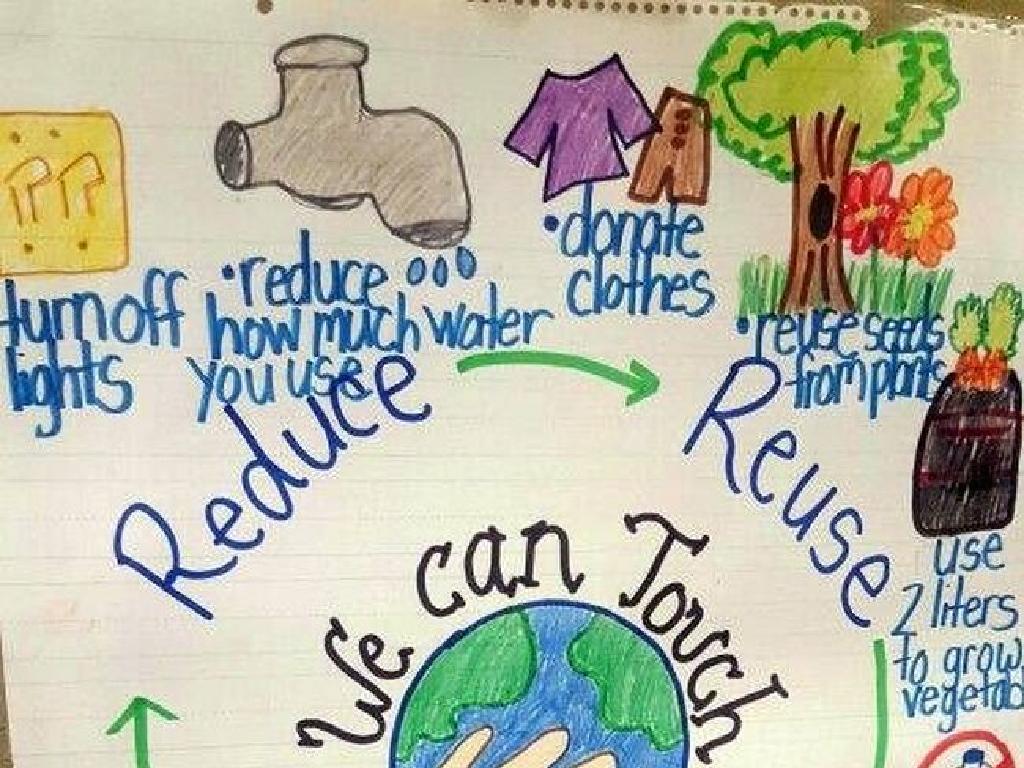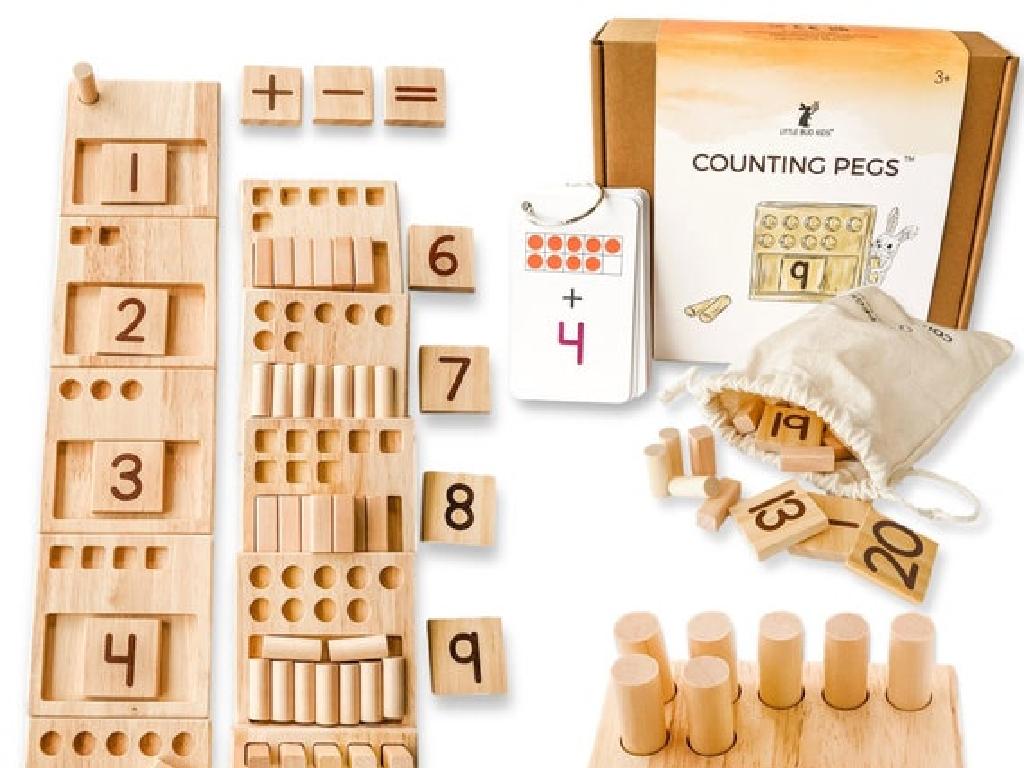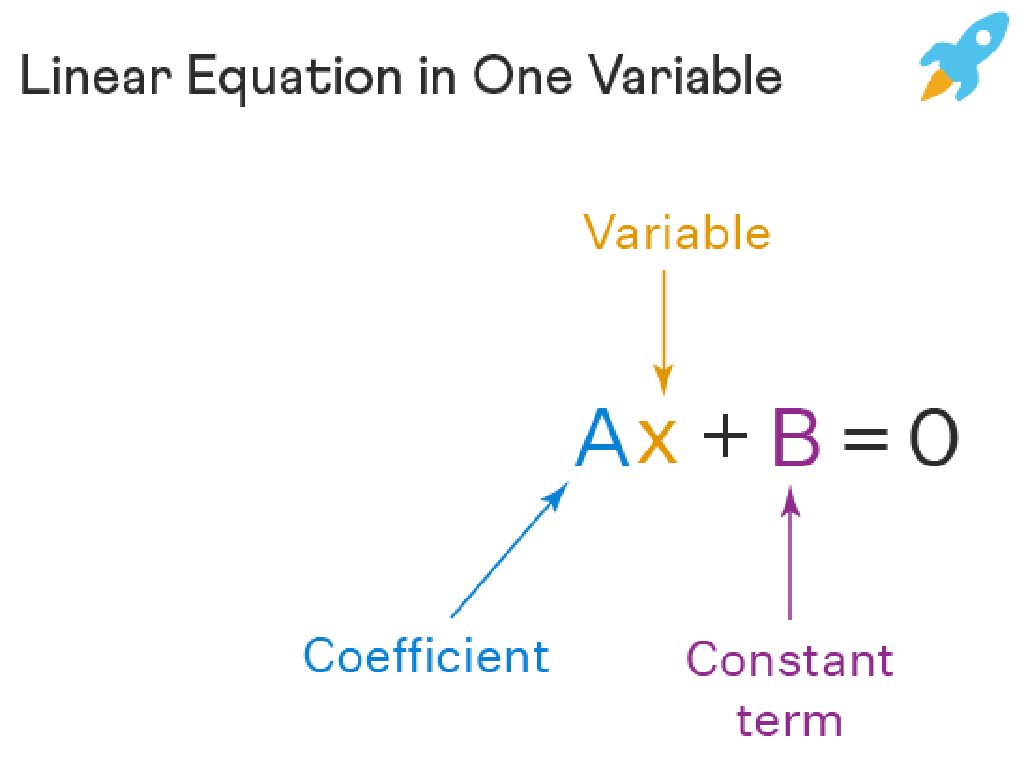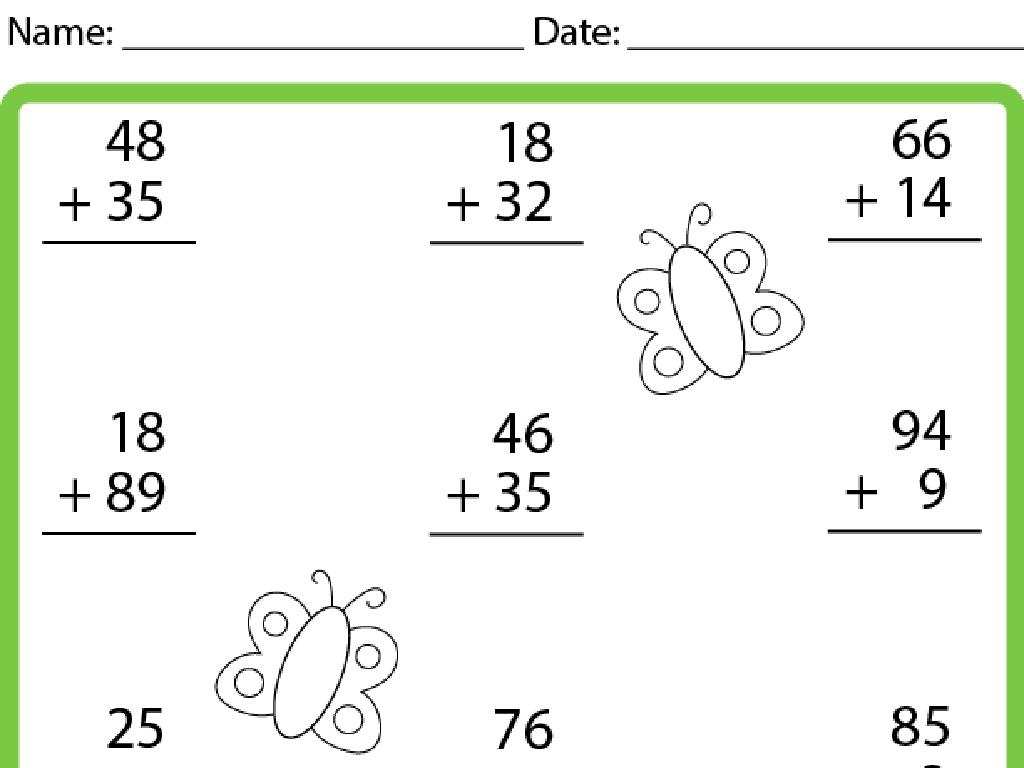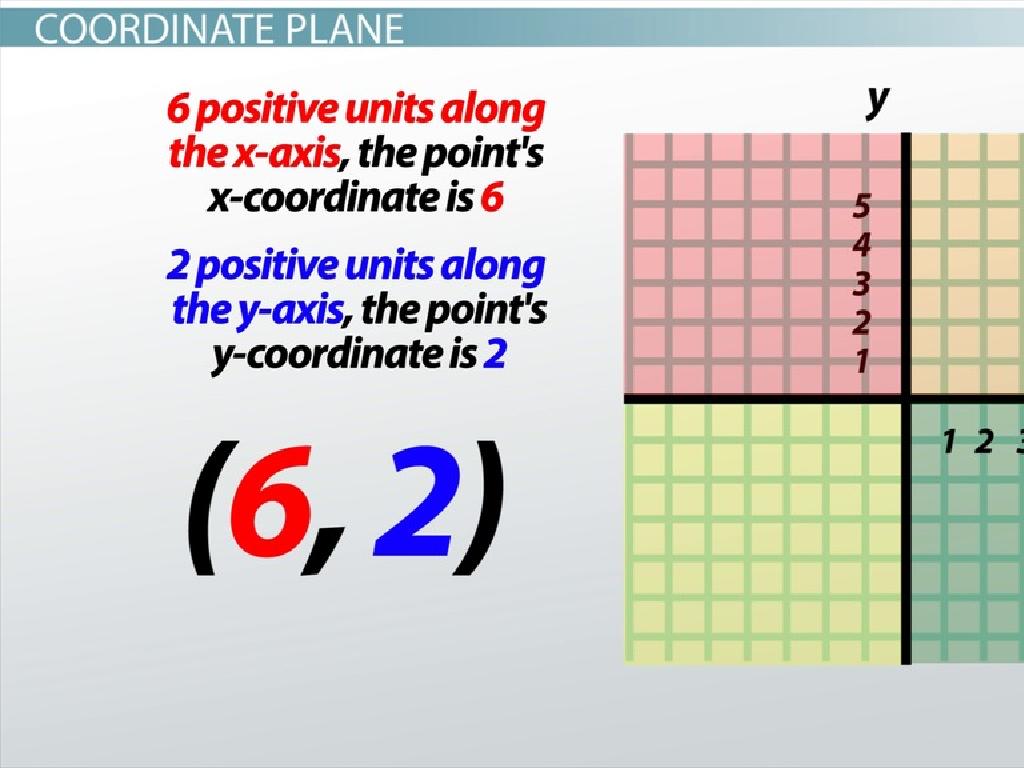Area Of Compound Figures With Triangles
Subject: Math
Grade: Seventh grade
Topic: Perimeter And Area
Please LOG IN to download the presentation. Access is available to registered users only.
View More Content
Exploring Area: Compound Figures with Triangles
– Perimeter vs. Area: What’s the difference?
– Perimeter is the boundary length; area is the space inside.
– Recap: Calculating area of squares, rectangles
– Area of rectangle = length × width, Area of square = side × side.
– Today’s focus: Compound figures with triangles
– Compound figures: shapes made up of triangles and other polygons.
– Steps to find area of compound shapes
– Break down into simpler shapes, find individual areas, then sum up.
|
Begin with a brief review of the concepts of perimeter and area, highlighting the differences. Recap the formulas for the area of squares and rectangles as a foundation. Introduce compound figures, emphasizing that they consist of triangles combined with other shapes. Teach students how to break down these figures into simpler shapes to calculate the total area. Provide examples of compound figures and guide students through the process of finding the area step by step. Encourage students to practice with different compound figures to solidify their understanding.
Exploring Compound Figures with Triangles
– Define compound figures
– Shapes made by combining two or more simple shapes
– Examples of compound figures
– Basketball courts, L-shaped rooms, and park layouts
– Find triangles in figures
– Look for 3-sided shapes within complex figures
– Calculate area of triangles
– Use the formula 1/2 * base * height for each triangle
|
This slide introduces students to the concept of compound figures, which are shapes formed by combining two or more simple shapes. Use relatable examples like sports fields or room layouts to illustrate compound figures. Emphasize the importance of identifying triangles within these figures as a step towards calculating the total area. Teach students to recognize and outline triangles in various compound figures and then apply the formula for the area of a triangle to each identified triangle. Encourage students to practice with different compound shapes and to sum the areas of individual triangles for the total area of the compound figure.
Breaking Down Compound Figures
– Divide figures into simple shapes
– Split complex shapes into rectangles, triangles, etc.
– Focus on triangles in figures
– Identify all triangles to calculate their area separately
– Use formulas for triangle area
– Apply the formula 1/2 * base * height for each triangle
– Sum areas for total compound area
|
When dealing with compound figures, the strategy is to break them down into simpler shapes that students are already familiar with, such as triangles and rectangles. This slide emphasizes the importance of focusing on the triangles within these figures. Students should use the formula for the area of a triangle (1/2 * base * height) to find the area of each individual triangle. After calculating the area of each simple shape, students will sum them to find the total area of the compound figure. Encourage students to practice with different compound shapes that include triangles and to verify their understanding by comparing the sum of the parts to the whole.
Calculating Triangle Area
– Area formula for triangles
– Area = 1/2 * base * height
– Identifying base and height
– Base is one side, height is perpendicular to base
– Practice with different triangles
– Use various triangles to practice
– Class activity: Area calculation
– Solve problems on calculating areas
|
This slide introduces the formula for calculating the area of a triangle and helps students identify the base and height in different orientations. Emphasize that the base can be any side of the triangle, but the height must be perpendicular to it. Provide a range of triangles, including right-angled, isosceles, and scalene, to practice identifying the base and height. The class activity will involve students calculating the area of various triangles using the formula. Prepare several practice problems with different difficulty levels to cater to all students. Encourage students to draw the height when it’s not obvious, especially in obtuse or isosceles triangles. The goal is for students to become comfortable with the concept and the calculation process.
Calculating Area of Compound Figures
– Step-by-step total area calculation
– Break down figure into triangles, rectangles, etc.
– Add areas of simple shapes
– Find and sum the area of each individual shape
– Subtract areas if overlapping
– Deduct the shared parts only once from total
– Practice with examples
|
When teaching students to calculate the area of compound figures, start by explaining the step-by-step approach to find the total area. Encourage them to visually break down the compound figure into simpler shapes such as triangles and rectangles. Students should then calculate the area of each simple shape using the appropriate formulas and add these areas together to find the total area. If the compound figure has overlapping areas, instruct students to identify and subtract the overlapping parts to avoid counting any area twice. Provide practice examples of compound figures with varying complexity to ensure students can apply these steps independently. This slide should give students a clear understanding of the process and prepare them for hands-on activities.
Let’s Practice Together: Area Calculation
– Example 1: Compound figure area
– Break down the figure into triangles and other shapes, then find the area of each.
– Work in pairs for calculation
– Collaborate to solve the problem and compare strategies.
– Share methods and answers
– Discuss the different approaches used to find the area.
– Class discussion and review
|
This slide is designed to facilitate a collaborative learning experience. Present a compound figure to the class and ask them to work in pairs to calculate the area. Encourage students to break the figure into simpler shapes, such as triangles and rectangles, and find the area of each before summing them up. After the activity, lead a class discussion where each pair shares their method and answer. This will help students learn from each other and understand different ways to approach the problem. As a teacher, guide the discussion to ensure all students understand the concept and correct any misconceptions. Provide at least 4-5 different compound figures for variety and to accommodate different student pairs working on different examples.
Challenge: Complex Triangular Figures
– Analyze a compound figure
– Collaborate in Think-Pair-Share
– Work with a partner to solve the area challenge
– Calculate the area together
– Discuss problem-solving strategies
– Share the methods used to determine the area
|
This slide introduces a class activity designed to deepen students’ understanding of calculating the area of compound figures that include triangles. Students are first presented with a complex figure and are challenged to analyze it individually. They then pair up to discuss and solve the problem together, fostering collaborative learning. After calculating the area, each pair will share their problem-solving strategies with the class, allowing students to learn from each other’s approaches. For the teacher: Prepare several compound figures of varying complexity to accommodate different skill levels. Encourage students to break down the figures into simpler shapes, calculate individual areas, and then sum them up. Discuss the importance of communication and teamwork in problem-solving. Provide guidance on how to approach complex problems by identifying familiar patterns and applying known formulas.
Class Activity: Create Your Own Compound Figure
– Draw a compound figure with triangles
– Calculate the total area of your figure
Break down the figure into simple shapes, find each area, then sum them up.
– Present your figure and calculations
– Explain your reasoning to the class
Discuss how you determined the area for each shape and the steps you took.
|
This activity is designed to reinforce students’ understanding of calculating the area of compound figures that include triangles. Students will apply their knowledge of area calculation for simple shapes and learn how to combine them to find the area of a more complex figure. Provide students with graph paper to assist in accurate drawing and calculation. Encourage creativity in their designs but remind them to include at least one triangle. As they present, they should explain the process they used to calculate the area, including any formulas. Possible activities for different students could include creating figures with different types of triangles, using a set perimeter to influence their designs, or incorporating real-life objects into their figures.
Review and Reflect: Area of Compound Figures
– Recap key lesson points
– Reflect on area calculation
– How do we calculate the area of different shapes combined?
– Homework: Practice problems
– Solve assigned problems on compound figures with triangles
– Share insights next class
– Be prepared to discuss your solutions and challenges
|
This slide aims to consolidate the students’ understanding of calculating the area of compound figures that include triangles. Begin by reviewing the main points covered in the lesson, such as the formulas for the area of rectangles, triangles, and how to approach irregular shapes. Encourage students to reflect on the methods they’ve learned to calculate the area of combined shapes. Assign practice problems that require students to apply these methods to new compound figures. For the next class, students should be ready to share their answers and discuss any difficulties they encountered, allowing for peer learning and teacher feedback. This will help reinforce their skills and clarify any misconceptions.
Wrapping Up: Area of Compound Figures
– Excellent progress on compound figures!
– Next lesson: Perimeter of Compound Figures
– Keep practicing with different shapes
– Try combining various triangles with squares, rectangles, etc.
– Use creativity to build unique figures
– How can different shapes create new compound figures?
|
Today’s class focused on understanding how to calculate the area of compound figures that include triangles. Students should be commended for their hard work and encouraged to continue practicing at home. The next class will shift focus to exploring the perimeter of compound figures, which is another essential aspect of understanding geometric shapes. Encourage students to use their creativity to combine different shapes and create unique compound figures, which will help solidify their understanding of the concepts. Provide them with a few examples of shapes to combine at home, such as adding triangles to the sides of a rectangle, and encourage them to think about how the area and perimeter change with each addition.

